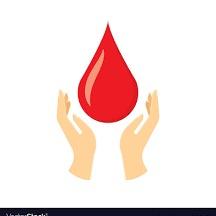एक-रक्त
A blood distribution system that not only ensures the immutability of the donor’s data but also provides transparency, effective management of surplus blood and prevents blood distribution frauds.
Created on 10th April 2022
•
एक-रक्त
A blood distribution system that not only ensures the immutability of the donor’s data but also provides transparency, effective management of surplus blood and prevents blood distribution frauds.
The problem एक-रक्त solves
Donors can donate blood, possibly at the campsite or at the blood bank itself. Information about the donated blood is recorded in the blockchain. A new block of data consisting of Information like Aadhaar numbers, blood group, blood ID, Etc. is appended to the Bloodstore. This blood is not yet verified, and hence it cannot be classified as safe or unsafe. Now the blood is taken to the blood inspection center, where after physically checking it, the Blood will be declared as ''Tested and Safe'' or ''Tested and Unsafe''. As this happens, a QR code will be generated which is the combination of Aadhaar numbers, blood ID, and Batch number's hash. This QR code will be automatically downloaded and is to be stuck on physical blood packets. The Donor will be notified in both cases about acceptance or discarding of his blood. Blood can be transferred by changing one of the attributes from Timestamp, owner of the Blood, Location of Owner, and verified. The blood, which is marked ''Tested and Safe'' can now be used for patients. Now, on the Hospital side, if blood is required, they have to specify the required blood group. Then our algorithm will search for the most optimal blood bank based on the Deciding factor. Deciding Factor Formula is calculated based on the thought that the distance between the two entities must be as minimum as possible. They must have a greater quantity of blood availabl. After finding the optimal blood bank, the Blood will be transferred from that blood bank to the current Hospital. Then the Hospital can see details of the Blood they have received virtually. They can also view the location of the blood bank on Google Maps, and finally, when the Blood is received physically, they can upload the QR code present on the Blood and verify the correct Blood is received. This verif
Challenges we ran into
- Integrating the Solidity Smart Contract with React JS User Interface while maintaining the security of our system.
- Deploying our private blockchain in polygon Matic Mumbai test network.
- Thinking through various perspectives including that of a fraudster to ensure that our system is full proof from all sides.
- Coming up with an optimal blood transfer algorithm that ensures the timely transfer of the surplus blood to the needed hospitals.
